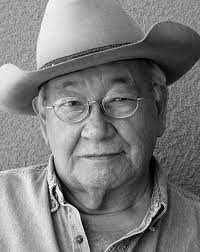
Once they leave the elementary grades, students are typically loath to write poetry. One way to get them to do so is to use a template based on well-known poem. I get good results with N. Scott Momaday’s “The Delight Song of Tsoai-talee.”
To start, I read the poem and discuss it like you would any other. What do you notice? (Students will surely mention the repetition.) What’s the coolest line? (Many students dig that long track of the moon on the lake.)
From here, I ask students to use Momaday’s structure to write an imitation poem. Thus, all lines in the longer first stanza start with the metaphor-producing words “I am…” and all lines (except for first and last, which I have them use verbatim) in the second stanza start with the words “I stand in good relation to….” In the name of variety, I ask them not to stand in good relation to any of the same things as Momaday, nice as they are.
As a less-intimidating model, I compose my own imitation poem of this poem on the SmartBoard. I also demonstrate a little revision on the whiteboard by writing the rather prosaic line “I am the frost on the grass.” I improve it a bit by changing it to “I am the frost on the morning grass,” but we had already done a lesson on distrusting adjectives — especially if they would come readily to the mind of readers, given the nouns they modify — and students will usually allow that frost on grass is most associated with the morning.
Great! For revision the third, then, I write “I am the crystal on the first frost of November grass.” Still imperfect, but definitely becoming more specific and subtle — similar to the insights Momaday uses to show his intimacy with nature.
For further practice on both identifying unnecessary adjectives (because they’re obvious), write “cold snow,” “white clouds,” “green grass,” and “blue sky” on the board. Ask for a revision competition–something realistic, but, for readers, unexpected. You’ll see how much more satisfying student creativity is when they give you things like “blue snow,” “slate clouds,” “burnt grass,” and “tangerine skies.” (And yes, you might add, using the writerly trick of using a THING that is that color instead of the color itself, works wonders in poetry).
Without fail, the first drafts produced in 18 minutes or so are remarkable, especially when they correlate to each student’s daily life. I have students do a read-around with their groups and choose a favorite from each group to be shared with the class.
Each of these creations are named “The Delight Song of (Student’s Name).” Once placed in a portfolio and read by Mom and Dad, they often draw comments and (dare I say it?) delight.
As it should be!
